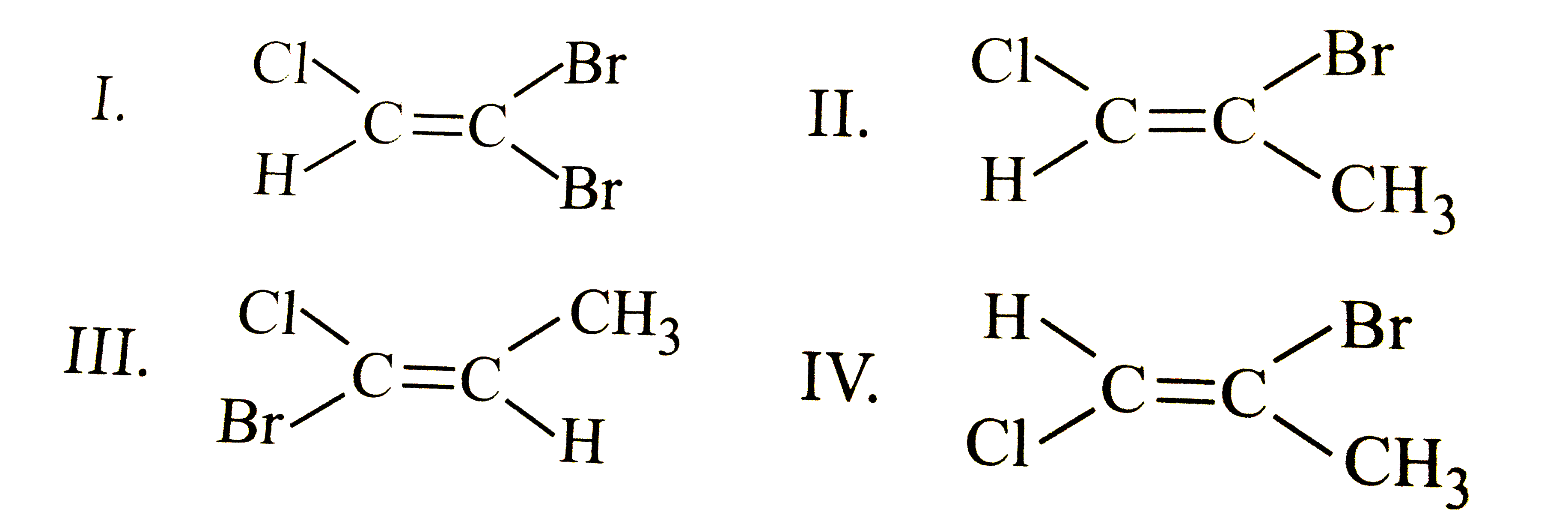Which pair of isomers illustrates the concept of ionisation isomers ?
[Cr(SCN)(NH3)5]2+and[Cr(NCS)(NH3)5]2+
[CoCl(NH3)5]SO4and[Co(SO4)(NH3)5]Cl
cis[PtCl2(NH3)2]andtrans[PtCl2(NH3)2]
(+)−[Co(en)3]3+and(−)−[Co(en)3]3+
The correct Answer is:B
To solve the question regarding which pair of isomers illustrates the concept of ionization isomers, we will follow these steps:
Step 1: Understand Ionization Isomers
Ionization isomers are compounds that have the same molecular formula but produce different ions when dissolved in solution. This typically occurs when a ligand can either be part of the coordination sphere or exist as a free ion outside of it.
Hint: Look for compounds that can yield different ions upon dissolution.
Step 2: Analyze the Given Options
We will evaluate each option to determine if they can produce different ions.
- Option A: (Cr(SCN)(NH3)5)2+ and (Cr(NCS)(NH3)5)2+
- Both complexes do not have any ligands that can ionize outside the coordination sphere. Therefore, they do not show ionization isomerism.
Hint: Check if any ligands can be released as free ions.
- Option B: (CoCl(NH3)5SO4) and (CoSO_4(NH3)5Cl)
- When (CoCl(NH3)5SO4) ionizes, it produces (Co(NH3)5)2+ and SO2−4.
- When (CoSO_4(NH3)5Cl) ionizes, it produces (Co(NH3)5)2+ and Cl−.
- Both complexes produce different ions upon ionization, thus they are ionization isomers.
Hint: Identify the ions produced from each complex upon dissolution.
- Option C: cis-(PtCl2(NH3)2) and trans-(PtCl2(NH3)2)
- These are geometrical isomers (cis-trans isomers) and do not involve any ionization. They do not produce different ions.
Hint: Consider the geometric arrangement of ligands and whether they can ionize.
- Option D: (Co(en)_3)^{3+} and (Co(en)_3)^{3-}
- These are not ionization isomers as they do not represent different ionization states of the same compound; they are simply different charges.
Hint: Check if both species have the same composition but yield different ions.
Step 3: Conclusion
After analyzing all the options, we find that Option B is the correct answer, as it illustrates the concept of ionization isomers by producing different ions from the same coordination compound.
Final Answer: Option B: (CoCl(NH3)5SO4) and (CoSO_4(NH3)5Cl) illustrate ionization isomers.
Ionization isomers are compounds that have the same molecular formula but produce different ions when dissolved in solution. This typically occurs when a ligand can either be part of the coordination sphere or exist as a free ion outside of it.
We will evaluate each option to determine if they can produce different ions.
- Both complexes do not have any ligands that can ionize outside the coordination sphere. Therefore, they do not show ionization isomerism.
- When (CoCl(NH3)5SO4) ionizes, it produces (Co(NH3)5)2+ and SO2−4.
- When (CoSO_4(NH3)5Cl) ionizes, it produces (Co(NH3)5)2+ and Cl−.
- Both complexes produce different ions upon ionization, thus they are ionization isomers.
- These are geometrical isomers (cis-trans isomers) and do not involve any ionization. They do not produce different ions.
- These are not ionization isomers as they do not represent different ionization states of the same compound; they are simply different charges.
After analyzing all the options, we find that Option B is the correct answer, as it illustrates the concept of ionization isomers by producing different ions from the same coordination compound.
Topper's Solved these Questions
- COORDINATION COMPOUNDS BOOK - AAKASH INSTITUTE ENGLISHCHAPTER - COORDINATION COMPOUNDS EXERCISE - Assignment (Section-C Objective type Questions ( More than one Option are correct))
14 Videos
- COORDINATION COMPOUNDS BOOK - AAKASH INSTITUTE ENGLISHCHAPTER - COORDINATION COMPOUNDS EXERCISE - Assignment (Section-D Linked Comprehension Type Questions ) Comprehension-I
3 Videos
- COORDINATION COMPOUNDS BOOK - AAKASH INSTITUTE ENGLISHCHAPTER - COORDINATION COMPOUNDS EXERCISE - Assignment (Section-A Objective type Questions (One Option is correct))
45 Videos
- CLASSIFICATION OF ELEMENTS AND PERIODICITY IN PROPERTIESBOOK - AAKASH INSTITUTE ENGLISHCHAPTER - CLASSIFICATION OF ELEMENTS AND PERIODICITY IN PROPERTIESEXERCISE - Assignment (Section - J Aakash Challengers Questions)
6 Videos
- ELECTROCHEMISTRY BOOK - AAKASH INSTITUTE ENGLISHCHAPTER - ELECTROCHEMISTRY EXERCISE - Assignment (SECTION - J) (Aakash Challengers Questions)
10 Videos
Similar Questions
Knowledge Check
Which of the following pairs of isomers is not correctly matched with its type of isomerism ?
A[Cr(NH3)6][Cr(CN)6] and [Cr(NH3)4(CN)2][Cr(NH3)2(CN)4]- Coordination isomerismB[Co(NH3)5NO2]Cl2 and [Co(NH3)5ONO]Cl2-Linkage isomerismC[Co(py)2(H2O)2Cl2]Cl and [Co(py)2(H2O)Cl3]H2O - Coordination isomerismD[Pt(NH3)4Br2]Cl2 and [Pt(NH3)4Cl2]Br2- Ionisation isomerismWhich of the following pairs of structures represents conformation isomers?
A B
B C
C D
D
A pair of stereoisomers might be classified in various ways. Which of the following statement are true with respect to pairs of stereoisomers ?
(a) They might be configurational isomers
(b) They might be diastereomers
(c) They might be constitutional isomers
(d) They might be tautomers .
(e) They might be conformational isomers
(f) They might be enantiomers
(g) They might be positional isomersAa, b, c, eBb, d, e, f, gCa, b, fDa, b, c, f





